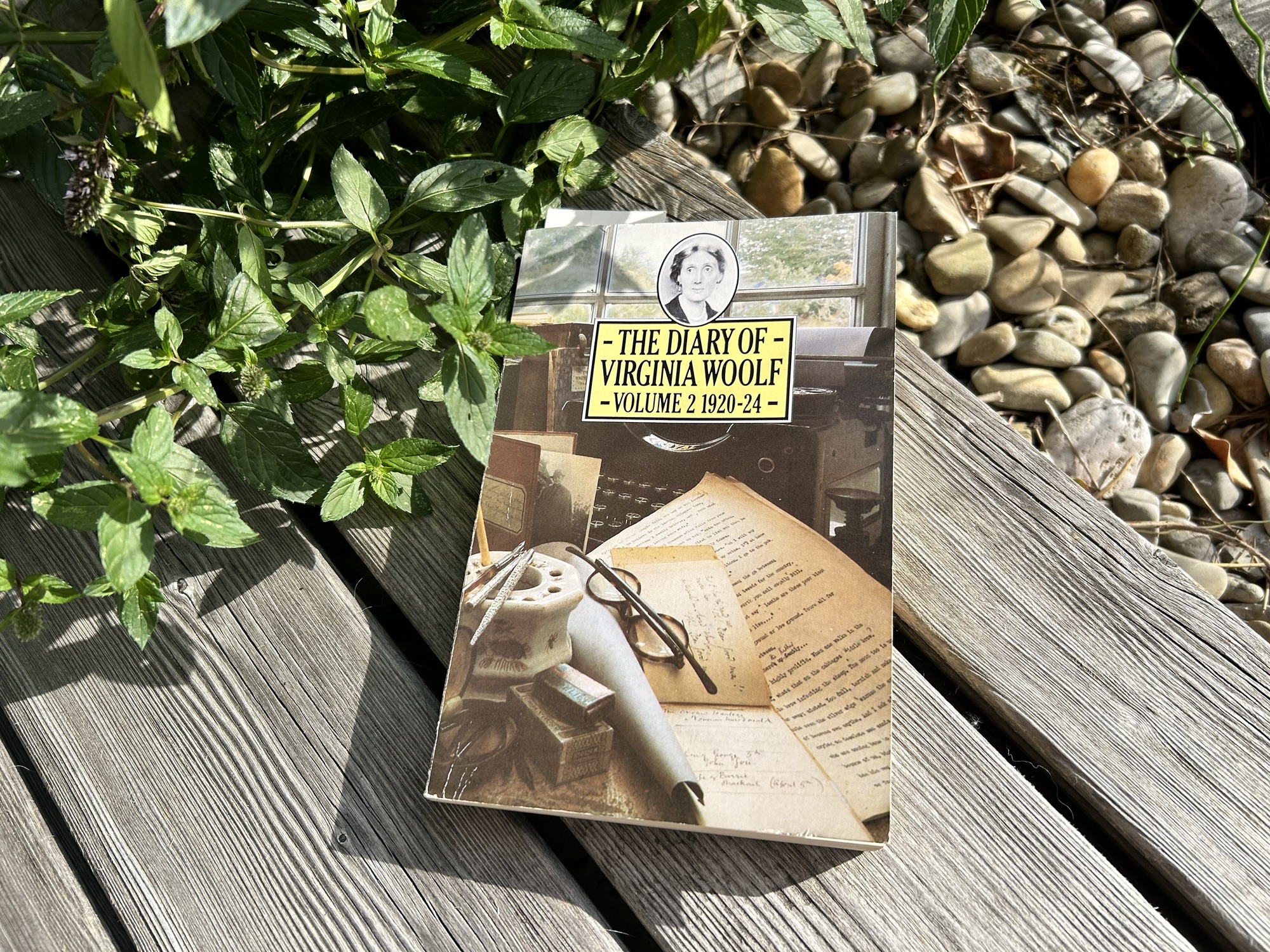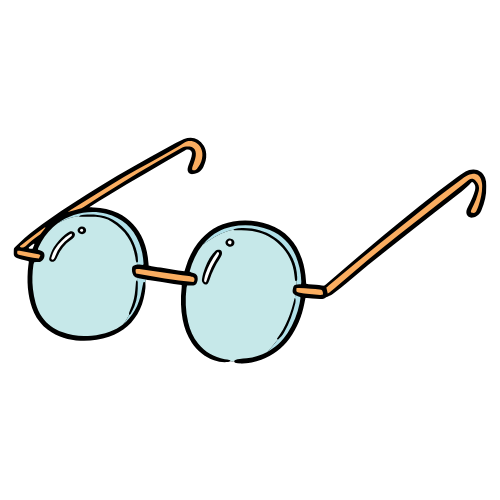Virginia Woolf wrote all in all 38 diary-notebooks in the years between 1898, when she was almost 15, and 1941, when she died aged 59. I can’t speak for all this amount of personal documentation left behind, but the three years of Virginia Woolf’s diaries I’ve read, between 1920 and 1922, open a window towards her inner life, her reading, her writing, her love of nature, her fears and her fearlessness. She writes of people, mostly. Short character sketches, a lot of guests and dinner parties, visits for tea, but also quiet evenings at the famous Monks House in Rodmell, East Sussex, her writer’s retreat. She writes of her friends E.M. Forster (“Morgan”), T.S. Eliot (“Tom”) and Katherine Mansfield (“K.M.”), ending the year 1922 with the very appropriate cliffhanger of meeting Vita Sackville-West (“the lovely gifted aristocrat”).
It’s a weird feeling to think that, in that December 1922, Virginia Woolf didn’t know where life would push her. She was working on Mrs Dalloway, but the structure she seems to have in mind is different from the novel we read nowadays. She seems to be quite attracted to Vita, but I can’t imagine she could have foreseen the passionate friendship that we now read of as the stuff of legend. She was just living and writing of it. One thing she did know though. She knew that with her Jacob’s Room, which she had just published on October 26th 1922, she would tear open a new path in the writing of fiction.
So how read Virginia Woolf’s diary? How read diary in general? Here are 5 ways which might help.
read the index
This is the method I used when browsing Woolf’s diaries for any references for Katherine Mansfield. I wanted to write about their friendship from Virginia’s perspective as well, and I didn’t really have any other direct source, since only two letters from Virginia to Katherine survived. The index entry for “Murry, Katherine” aka Katherine Mansfield is quite rich for volumes 1 and 2, and the best thing is that it also gives you some sort of idea what the entries are about: “VW winces”, “no word from”, “two hours of priceless talk”. The index is a great resource to bring you to your point of interest. Full two-page diary entries are a rich source for the reader looking for material, but short two-sentence references give a glimpse into the mind of a Virginia who was just barely busy with thoughts of Katherine.
K. is back, I suppose; & I amuse myself with playing at the silly game – who’s to take the first step: I predict here that perhaps Murry will – if not, we don’t meet for a year or two [5 May 1920]
read chronologically
I decided to read Virginia Woolf’s diaries between the years 1920 and 1922 because I wanted to follow the writing process of Jacob’s Room, which was published in 1922. I must admit I was a bit disappointed to find only few references to the novel. The idea for the novel occurred to Woolf on the day after her 38th birthday:
Happier today than I was yesterday having this afternoon arrived at some idea of a new form for a new novel. Suppose one thing should open out of another […] Doesn’t that get closer & yet keep form & speed, & enclose everything, everything? My doubt is how far it will
includeenclose the human hear [26 January 1920]
And then it’s just some sprinkles here and there that she’s delayed in her writing. It gets interesting again as the book is ready for publication and reviews start coming in. Leonard calls it “a work of genius”, while reviewers and the general public seem to hold contradictory opinions.
This time the reviews are against me, & the private people enthusiastic. Either I am a great writer or a nincompoop. So far, of course, the success is much more than we expected. I think I am better pleased so far than I have ever been [29 October 1922]
I did gain something else, as well, by reading chronologically. At the beginning of 1920 Virginia reread The Voyage Out and called it a “harlequinade… frivolous and shallow” She completely disavowed her first novel! Then, in March 1920 she went to the first Memoir Club meeting, calling it “a highly interesting occasion”. It’s one thing to know these facts historically, and something else entirely to read them as they happened, pulled out like single moments from the flow of the day.
read by season
A nice idea which I might try in the future is to read by season or by month. Like in the autumn of 2024 read what Woolf wrote in her diary in the autumn of 1924. It will have been exactly 100 years since she wrote down her thoughts and it would be a double celebration – first, a special celebration of autumn, my favourite season, and second, a reconnection with how Woolf was living through the autumn before the publication of Mrs Dalloway.
In July 1920 Woolf wrote an entry which made me instantly love her even more. She wrote just to complain. First, about her servants, next about her reviewing and third, about her weather. Complaining is a bit of a hobby of mine as well and I really had to smile thinking we might share this little obnoxious trait.
As for the weather, the sun shines in a modified way at this moment; so I will say no more, save that I don’t suppose it will last, or do more than dry the topmost layer of earth upon what must be a swamp. [13 July 1920]
read virginia woolf’s diaries alongside her other works
Woolf started writing Mrs Dalloway in the second half of 1922 and this is really apparent in the little notes she makes here and there
I don’t like the feeling I’m writing too quickly [16 August 1922]
I have left of Mrs Dalloway in Bond Street; & really why is it? [22 August 1922]
I shall try to sketch out Mrs D. & consult L. & write the aeroplane chapter now, for I must write out of my head again. I must be ready to start the Greek chapter say on the 20th [7 November 1922]
To read Mrs Dalloway and accompany it with historical evidence of how its author conceived it and wrote it would make for a rewarding experience, that goes beyond simple “reading”. It would allow you to gain insight into the workings of Woolf’s mind as she was busy writing, the context of post-WWI London and personal struggles that poured into her work.
read next to hermione lee’s biography
I could easily have said “read next to a biography”, but Hermione Lee’s is widely regarded as the Woolf go-to biography. The book is a 900-page brick and the paperback Vintage edition just makes it more so. It is divided into 40 chapters to help readers find their way through Woolf’s life. It starts with childhood and relationships to siblings and parents, first attempts at writing, the great novels of the 20s and the 30s and of course, her death by suicide. “There is no such thing as an objective biography”, Lee notes, but this doesn’t bother me. Lee’s interpretation of Woolf’s novels in the context of her life and diaries just makes the book more of a compelling read.
The complete edition of Virginia Woolf’s mature diaries, 1916-1941, was published between 1977-1984 in 5 volumes and has just been reedited by Granta last year. But shiny new books are not my thing. I’ve been buying a volume a year either used, online, or have just been waiting for destiny to push it my way. The worn pages and notes of previous readers (if lucky) give my reading a sense of authenticity and connection to the past. I’m looking online at pictures from the original notebooks and imagine how it would feel to touch the porosity of those hundred-year-old pages. I can dream. And continue to read Virginia Woolf’s diaries.







your thoughts?